
Having trouble viewing this video? Please visit our Video FAQ page With the long hood stripes in place, Cody now turns to applying decals on the short hood and cab of our HO scale Winston-Salem diesel locomotive. Check out the techniques that make this effort go smoothly and yield great results! […]
Read More…

1. Behind a raised Colorado railway, a magnificent 20′ train barn doubles as a street scene of local Leadville storefronts, circa 1890. All three pictured trains fit inside, along with spare rolling stock. Also notice the red running shed over the portal on Bob Ferrero’s Red Cliff Denver & Rio Grande Railroad. Bob Ferrero 2. […]
Read More…

Gary likes the durability of concrete buildings. Scratchbuilding means that one can add features like diamond panes and automatic doors, as well as copy plans from the prototype. Gary Condry Gary Condry Wooster, Ohio, Zone 6 Concrete I modeled Cleveland Railway’s Wooster Office and Interurban Car Barn. I used QUIKRETE Vinyl Concrete Patcher, which I […]
Read More…
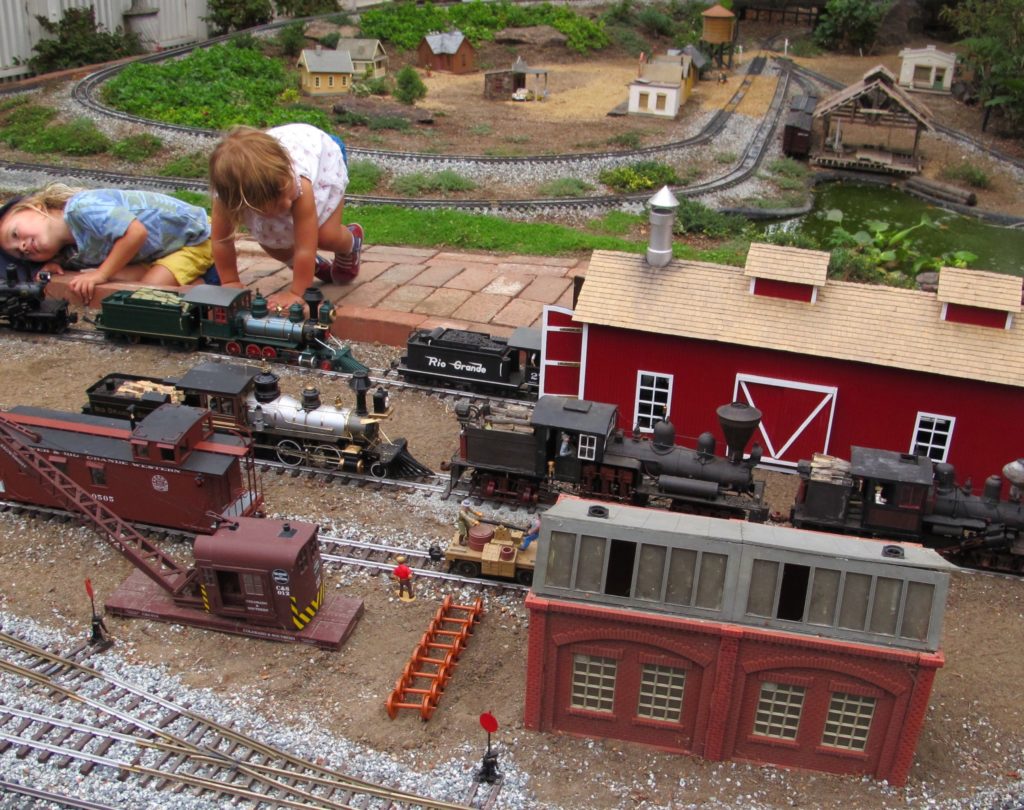
The local paper ran a story on Trevor’s FC&W. Here, two of the 300 guests inspect the trains and Lionel-kit engine shed built by Trevor. Also notice the plastic clerestory-roofed industrial building, which could house an engine. Nancy Norris Trevor Park Trevor Park Trevor Park Trevor Park Trevor Park Trevor Park Trevor Park Trevor Park […]
Read More…
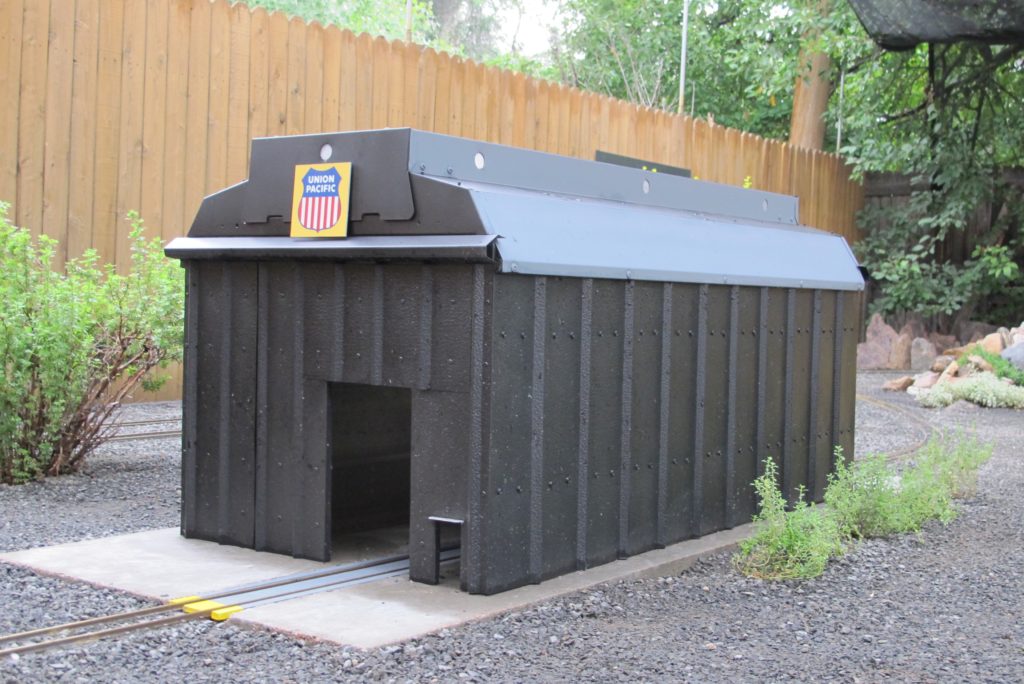
Craig actually works in a railroad shop, which he modeled when scratchbuilding his scale metal engine house. The roof came from a fluorescent light fixture. Nancy Norris Craig Lund Craig Lund Craig Lund Craig Lund Craig Lund Craig Lund Craig Lund Craig Lund Denver, Colorado Recycled metal I like to use “used” items in my […]
Read More…
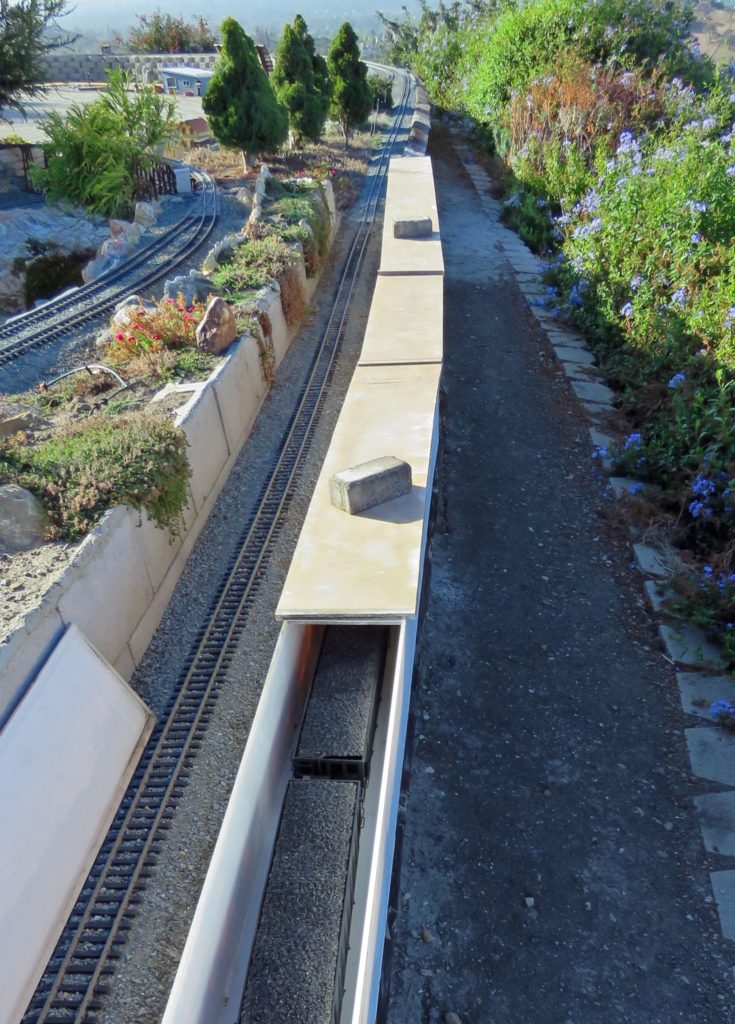
Tucked behind Ray’s Mystic Mountain Railroad, a weatherproof train shed houses his long coal train, which is ready to go at a moment’s notice. Ray likes working with acrylic, which should last a long time. Ray Turner Ray Turner Ray Turner Ray Turner Ray Turner Ray Turner Ray Turner San Jose, California Wooden box and […]
Read More…
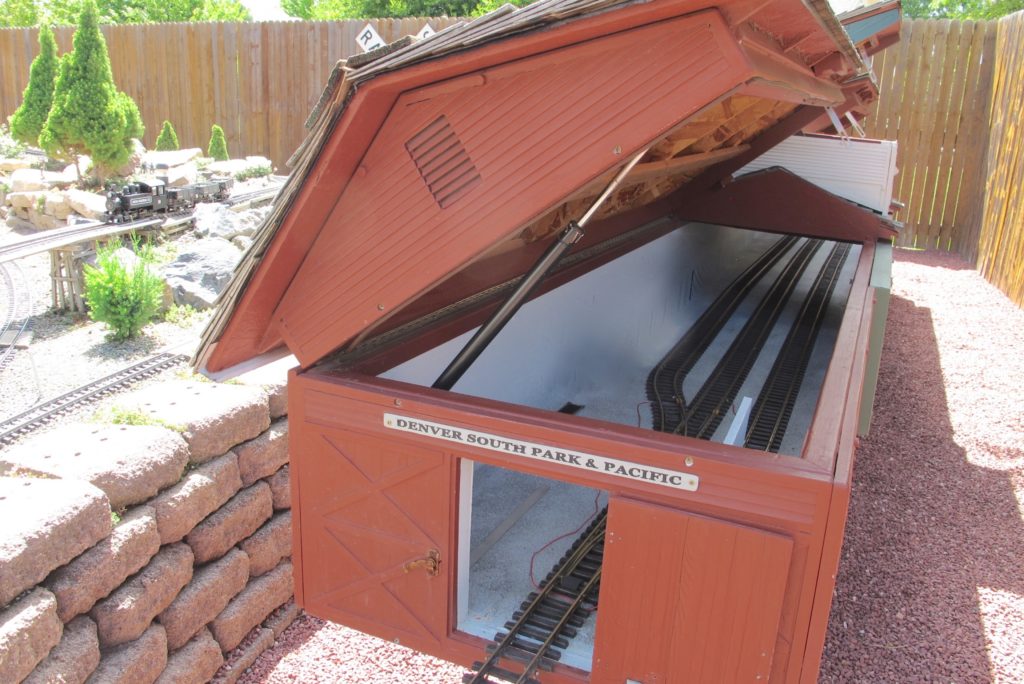
After many months of build time in his garage, Bob emerged with a practical car barn, so trains are ready to roll anytime. Gas struts help with raising the three separate overhead doors. Bob Ferraro Bob Ferraro Bob Ferraro Bob Ferraro Bob Ferraro Bob Ferrero Leadville, Colorado Scratchbuilt wood The engine house still looks great […]
Read More…
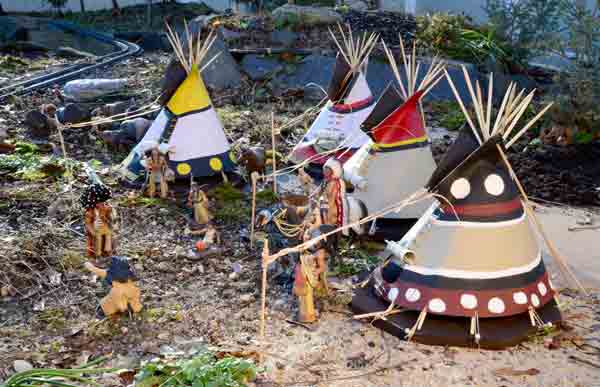
Patrick Friedmann In the April 2016 issue, Patrick Friedmann describes how to build an authentic tipi for your garden railroad. Registered users of our website can download full-size drawings to build a tipi. […]
Read More…

Having trouble viewing this video? Please visit our Video FAQ page Adding water-slide decals to our HO scale Winston-Salem diesel locomotive is the first step in giving the model a realistic appearance. Cody walks through the prep and application processes for dressing the long hood with horizontal striping. […]
Read More…

This Lehigh Valley interlocking tower protected a wye and a small yard in New York state. You can read more about the prototype in the April 2016 Model Railroader. […]
Read More…

The layout at a glance Name: Northern Memories Layout owner/designer: John Mueller Scale: HO (1:87.1) Size: 10 x 21 feet plus 13 x 17 feet Theme: freelanced, inspired by Chicago & North Western Ry. Locale: Northern Wisconsin Era: early 1950s Style: walk-in, around the walls Mainline run: 190 feet Minimum radius: 24″ Minimum turnout: Atlas […]
Read More…
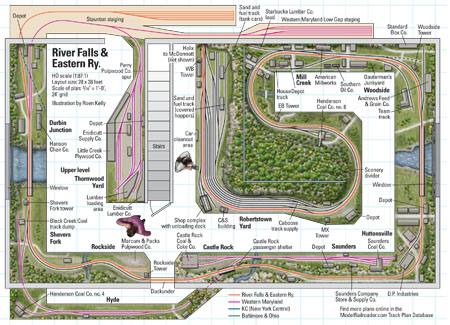
The layout at a glance Name: River Falls & Eastern Ry. Layout designer/owner: Larry Hickman Scale: HO (1:87.1) Size: 28 x 38 feet Prototype: Freelanced Locale: West Virginia Era: 1959 to ‘60 Style: Double-deck Mainline run: 400 feet Minimum radius: 24″ Minimum turnout: no. 6 Maximum grade: 2.5 percent Benchwork: open grid Height: 42″ (lower […]
Read More…












